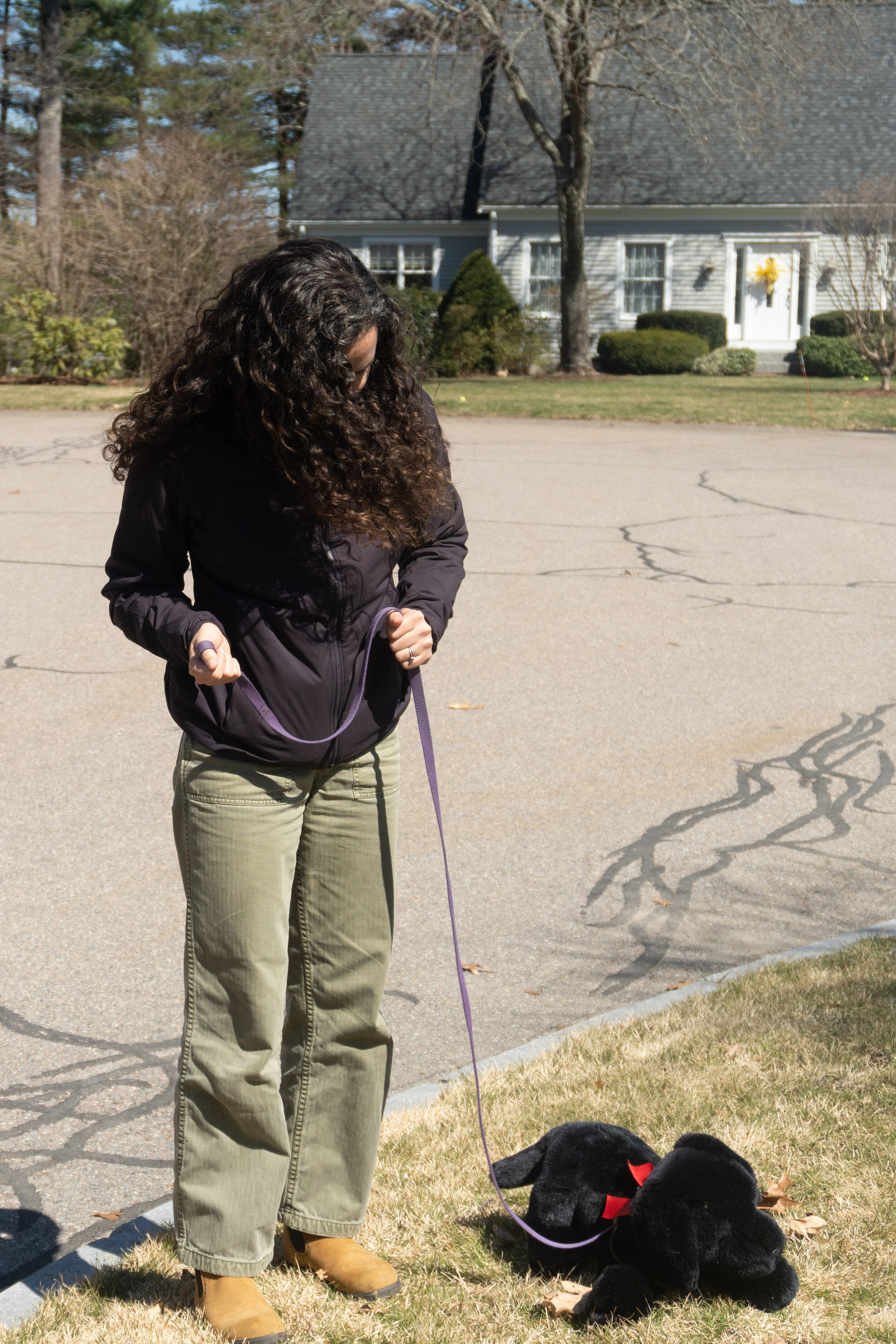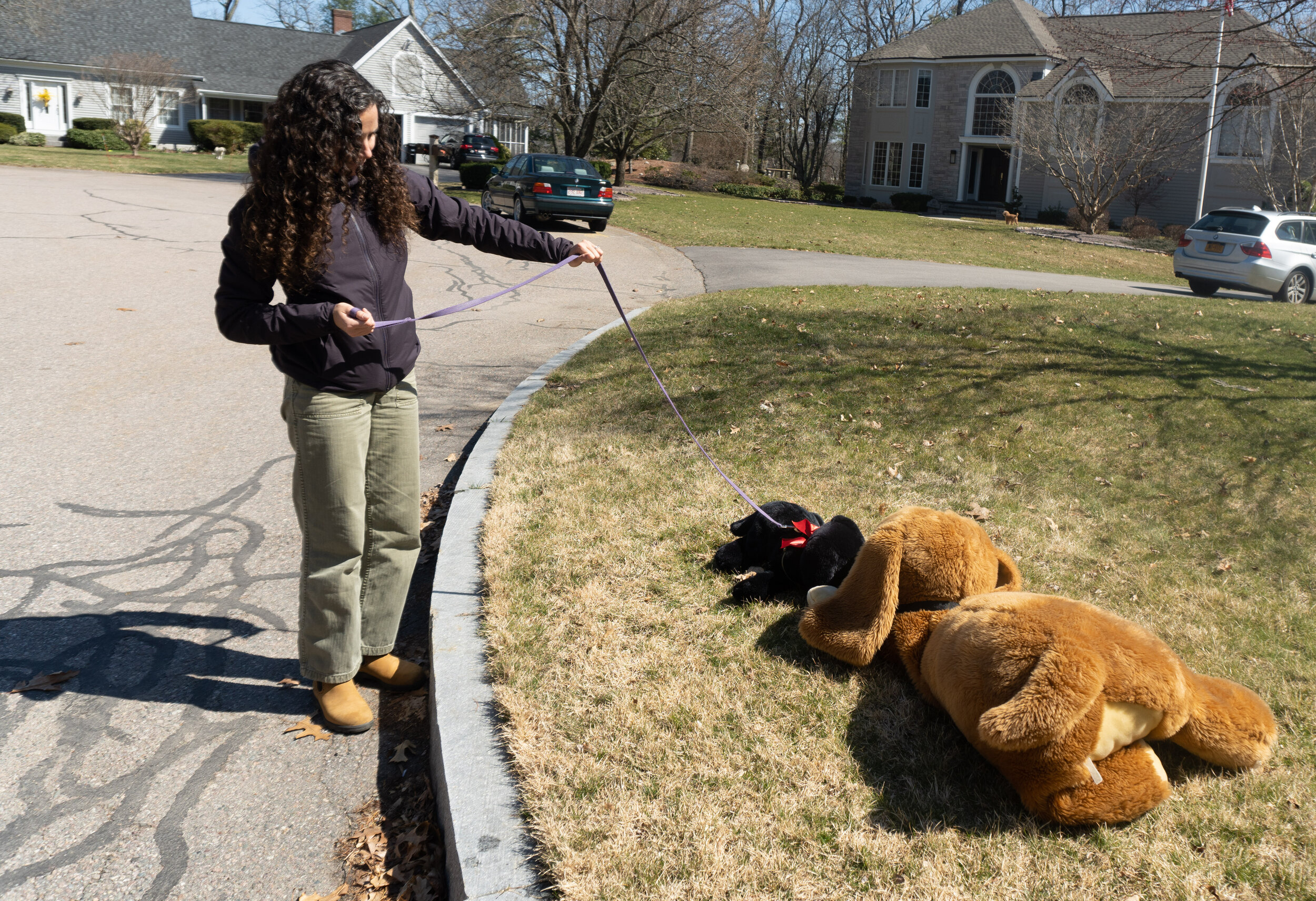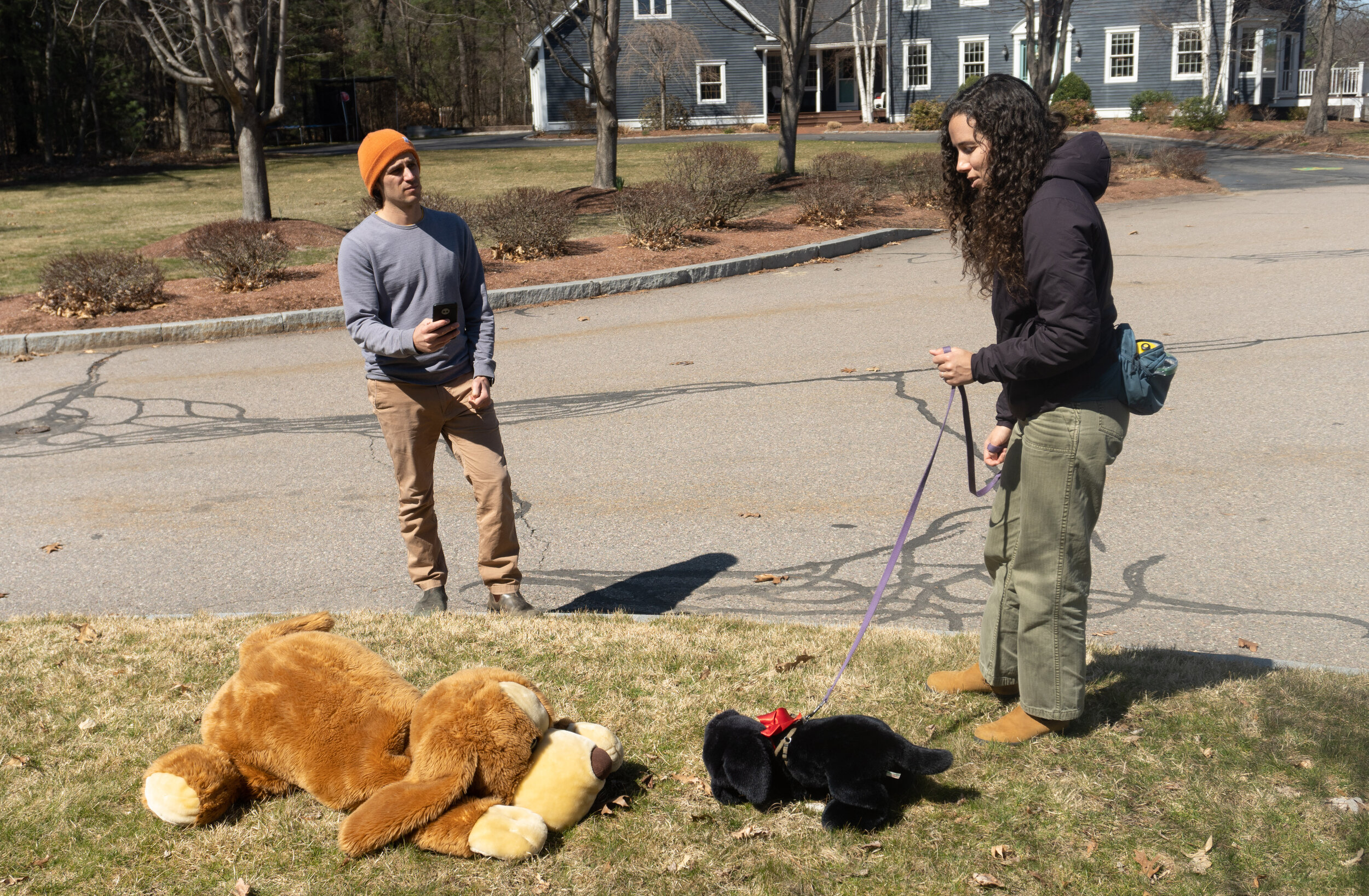Part Two of a series on managing interactions between your dog who isn’t good with other dogs and off leash dogs.
If you have a dog who is reactive, fearful, or otherwise not good with other dogs, then an off leash dog approaching you and your dog is probably your worst nightmare. Having a plan to deal with it can make any off-leash dog encounters safer for you and your dog and help you feel more confident taking your dog out.
This is a tough situation with a lot of variables, so I created a 2-post series to help you be as prepared as possible.
-
Part One covers how to stop the dog from interacting with your dog.
-
This post, Part Two covers what to do if you can’t stop the other dog from reaching your dog.
You may want to pull out a pen and paper and jot down your exact plan as you read through these posts. The more detailed you can be, the easier it will be for you to stick to the plan and make the best decisions you can in the heat of the moment. You’ll also want to make a list of any supplies you want to start carrying.
A QUICK DISCLAIMER
Please bear in mind that this is my opinion, based on my education and experiences. There is no way to know exactly how these situations will unfold or to guarantee a positive outcome, so consider if this advice seems right for you and your dog and act carefully.
WHAT TO DO IF AN OFF LEASH DOG INTERACTS WITH YOUR DOG
Most of what happens is out of your control, but you can choose what you say and do to try to reduce the tension in the situation.

I’ve still got a sturdy, two-hand grip on the leash, but those few inches of slack will help Hazel feel less trapped.
RELAX YOUR BODY.
Your dog may pick up on your physical signs of tension and have a negative response to it, which can make an already fraught situation worse for them. So, once you realize that dog is coming no matter what, try to relax your body.
-
Let go of the tension in your face, neck, shoulders, arms, and legs.
-
Try to maintain a steady respiratory rate.
-
If you can, avoid overt relaxation techniques like big sighs, deep breathing, or shaking out your tension, which could become cues to your dog that something bad is about to happen.
REMOVE LEASH TENSION.
The next thing to do is to loosen up the leash a bit. Even a few inches of slack can help your dog feel like they are less confined and have more options.
In limited situations, it may even make sense to unclip your dog’s leash. I would do it, even if it was illegal, as long as all of the following were true:

-
Your dog is good, or at least a lot better, with dogs if they are off leash.
-
You are in a safe environment, not too close to roads or other dangers.
-
Your dog is responsive enough to you that they will be safe.
USE YOUR PLAY VOICE.
Happy talk can go a long way in keeping a borderline dog interaction from tipping into an argument or a fight. As the other dog approaches, start a steady stream of calm, playful, and sweet talk and keep it up until the situation is resolved.
What you say doesn’t matter to the dogs, but it can affect how you are feeling and how your tone comes out, so pick something that works for you. I usually say something like “Hey baby, look at this wacky doggo coming our way. He looks a little nutty, but I bet he is just so excited to see you, since you are so adorable! I know it’s a bit much, but you’re going to be just fine.”
If you call out to the other handler, maintain a light, friendly tone and use your words to be clear about the urgency. Even if what you say isn’t directed at them, both dogs may be startled and upset by an intense tone.
END IT ASAP.
These techniques may buy you a few seconds of half-decent greeting, but they won’t magically change how your dog feels about and relates to other dogs. So you should be trying to separate the dogs
-
If you have a second person, have them stand a few feet away and try to coax the other dog over to them. They should use a playful voice and body language, not physical contact or treats. If the other dog does come over to them and has relaxed, comfortable body language, they can gently grab the dog’s collar or harness from under the chin rather than over their back or head.
-
While maintaining a calm voice, tell the other dog handler “You need to leash your dog immediately. Get over here now before a fight breaks out. This is very serious.” You don’t want to imply that your dog has a history of causing fights, which could come back to haunt you if something serious does happen.
STAY OUT OF IT.

Dog bites can have very high stakes for the dog who bites. And as I talked about in Part One, these tense situations are a high risk time for bites, even from your own dog.
-
Please don’t try to body block the other dog.
-
Even if you have your dog on leash, try to stay to the side of their interactions. Move as needed to stay out of the way.
-
I generally recommend not picking up small dogs. That puts you between your dog and the incoming dog and can even make your dog more tempting and exciting for the other dog. The lack of options could cause your dog even more stress. But, I do know some people who successfully use this strategy.
CONSIDER A MUZZLE.
This is one that you would have to set up ahead of time. But, if you know your dog fights with every dog they come into physical contact with, it probably makes sense to have them in a muzzle anytime you go out on walks. There’s only so much benefit you can get from happy talk and a loose leash, and it won’t be enough to overcome a strong negative history.
CONSIDER DOCUMENTING THE INCIDENT.

Devin is filming the interaction between our dog and the off leash dog in case we need evidence later on.
If you have a second person, it may make sense to have them film the interaction. You need to prioritize safety with your hands and attention, so don’t try this if you are out alone.
RESOURCES
-
If you think a muzzle is a good call for your dog, here is a great muzzle training plan from the Muzzle Up! Project.

